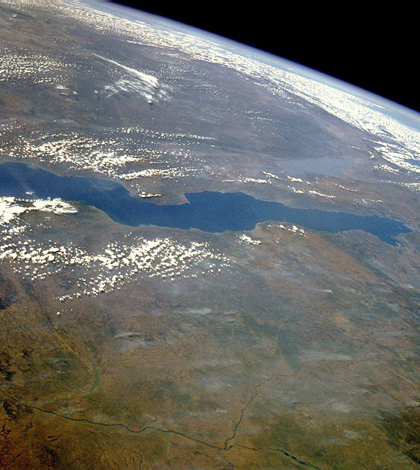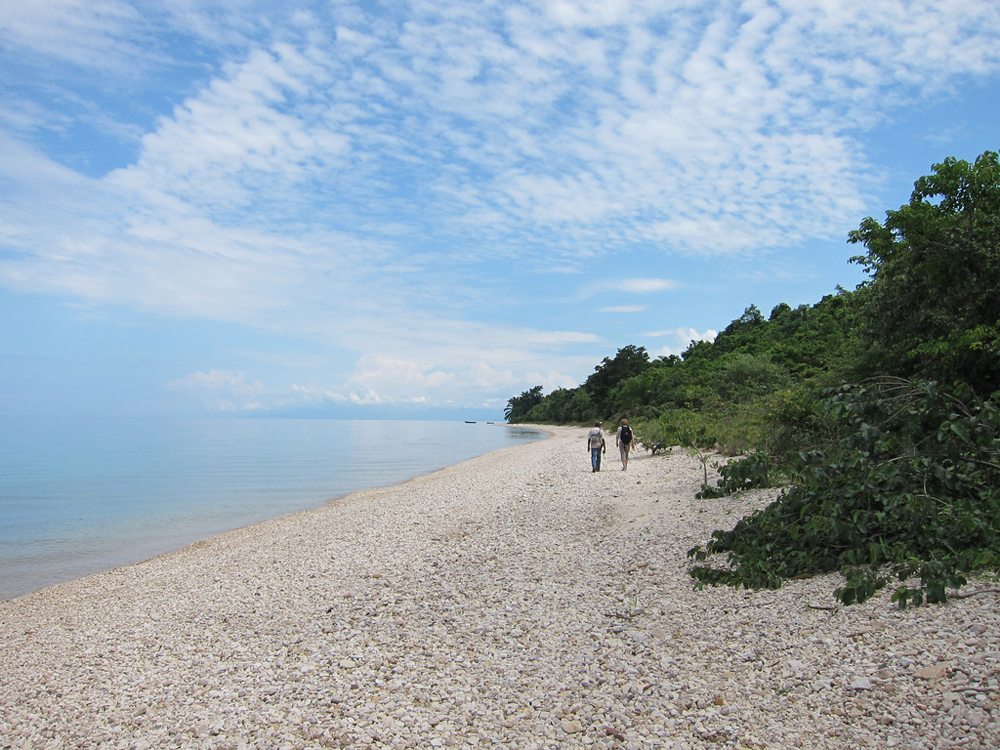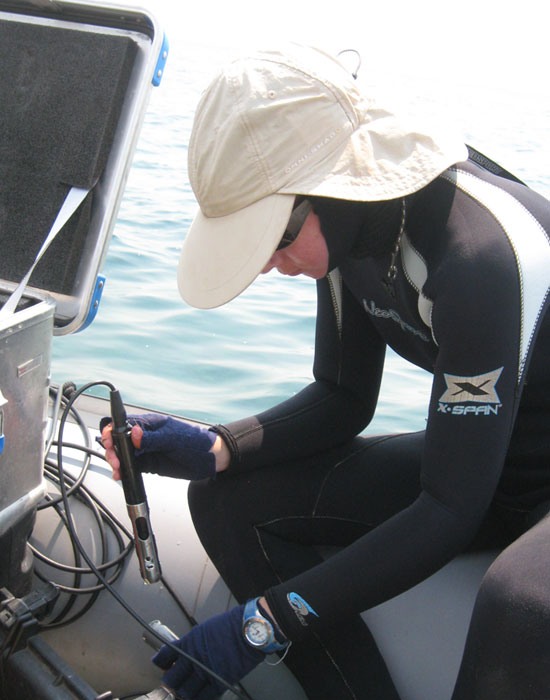Study of Lake Tanganyika shows fast nutrient cycling

Lake Tanganyika, captured here in a satellite photo, is the second largest freshwater lake in the world (Credit: NASA)
East Africa’s Lake Tanganyika harbors a diverse community of fish and invertebrates even though a water sample shows little nutrients available to keep the food web running.
Nutrient concentrations are low enough that the researchers say it can be hard to believe life is thriving in the lake. “We’ve come to believe that the nutrients just turn over very, very quickly,” said Peter McIntyre, assistant professor of limnology at the University of Wisconsin.
Researchers think that at any given time most of the nutrients that fuel the food web are tied up in the biology living in the lake.
The few leftovers fall to the deepest reaches of the lake, leaving nearly undetectable levels of nutrients in surface water. “You have to have a very sensitive instrument to measure the amount of nitrogen or phosphorus in Lake Tanganyika compared to most lakes in North America,” McIntyre said.
Tanganyika’s vibrant littoral zone may be the reason for the quick turnover of nutrients. The littoral zone is the area along the shoreline where the water is shallow enough for photosynthesis to occur at the lake bottom.
“I think that most lakes in the world and most large lakes historically have been low in nutrients, and the benthic and littoral zones are extremely important under those conditions,” said Yvonne Vadeboncoeur, a professor of limnology at Wright State University. “When you add agricultural runoff, you can lose the function of the littoral zone due to excessive nutrients causing plankton densities that shade the bottom.”
Healthy littoral zones offer a variety of habitats for aquatic organisms. It’s also an ideal place for algae attached to bottom surfaces to grow to feed other organisms.
The United States’ heavy nutrient runoff often feeds harmful algae, which shade out attached littoral zone algae, cutting off the supply of primary production from the bottom of a lake.

Gombe Stream National Park, Lake Tanganyika, Tanzania (Credit: fabulousfabs, via Flickr)
In Africa, farming is much less nutrient-intensive. Algae seldom bloom in Lake Tanganyika. Nutrients that might feed the algae in the water column are rapidly consumed by algae that serves as food for other creatures. The rest sinks the lake’s nearly mile-deep bottom. Only sustained winds bring some nutrients back to the surface.
“What we’re studying in Lake Tanganyika is how a clear, relatively pristine lake functions where the algae are doing what they’re supposed to be doing, which is being eaten by fish and providing food for other organisms, as opposed to forming noxious blooms,” Vadeboncouer said.
The team monitors production in the lake by examining dissolved oxygen shifts between day and night. Algae photosynthesize during the day, producing oxygen. Nightly respiration by fish and other biology consumes oxygen. “We’re lucky in that the ecosystem primary production and ecosystem respiration values have a pretty dominant impact on the dissolved oxygen signal relative to other potential sources,” said Ben Kraemer, a graduate student at the University of Wisconsin who is studying Lake Tanganyika.

Wright State Ph.D. student Brianne Kelly taking oxygen measurements at Lake Tanganyika (Credit: Wright State University)
A thermistor chain moored offshore monitors water temperatures down to 120 meters deep. Kraemer said they compare temperature values between nearshore and offshore monitoring to determine how the waters interact. “Comparing the temperature dynamics inshore and offshore gives us a sense of how important big-scale offshore mixing dynamics are for the nearshore zone,” he said.
The team had to look at nutrients in the lake in a broad sense to understand nutrient cycling in Tanganyika. McIntyre said instead of just looking at nutrients dissolved in the water, the team also accounted for nutrients in plants, fish and invertebrates. He said the team calculates nutrients by accounting for individual species biomass and the typical amount of nutrients that each organism contains.
The holistic approach helped the team piece together the idea of rapid nutrient cycling in the water. A compilation of monitoring, lab analyses, and statistical evaluations show that Lake Tanganyika’s ecosystem thrives with unusual efficiency compared to most of the world’s lakes.
Image: Lake Tanganyika, captured here in a satellite photo, is the second largest freshwater lake in the world (Credit: NASA, via Wikimedia Commons)




0 comments